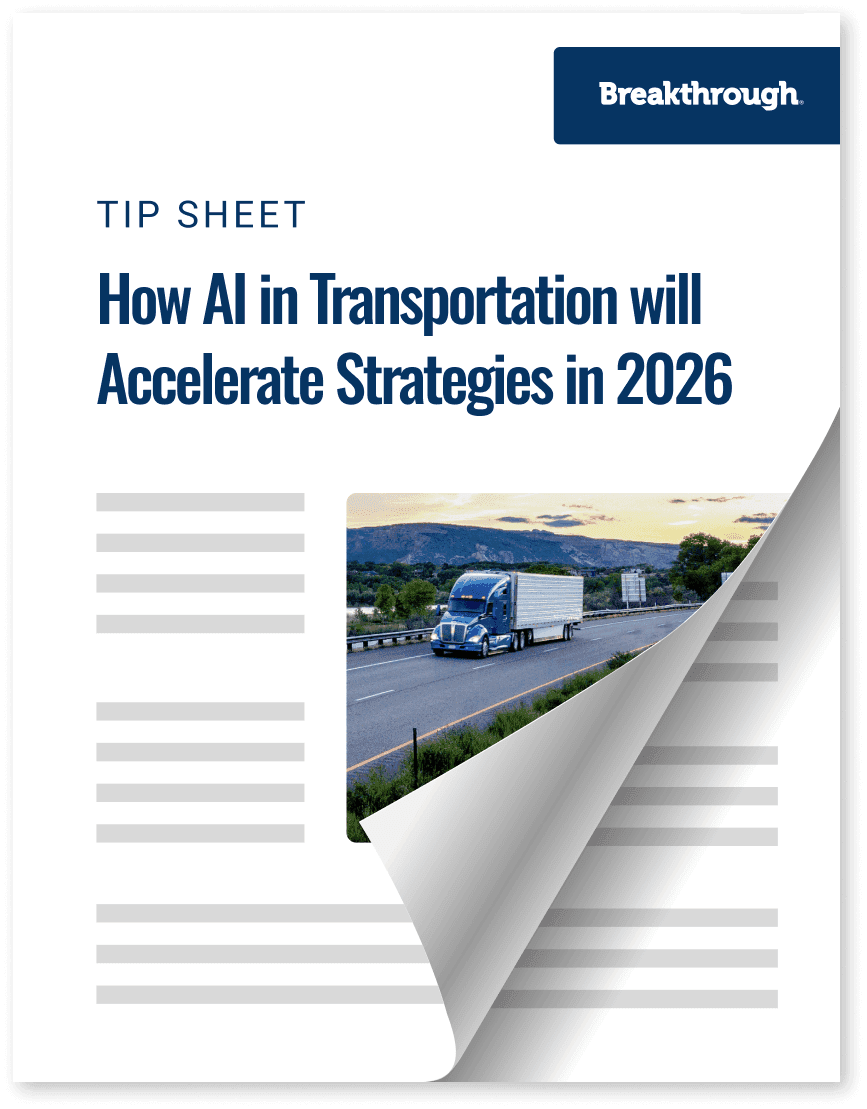How AI in Transportation will Accelerate Strategies in 2026

Trending
Top Posts
Fuel
Why Do Shippers Use The DOE Fuel Surcharge? A History Of The National Fuel Surcharge
5 min read
December 5, 2025
Market Events
How Ukrainian Drone Strikes on Russian Refineries Impact Your Fuel Costs
6 min read
November 20, 2025
Freight
The Definitive Guide on Fuel Management Systems
7 min read
November 11, 2025
4 min read
July 17, 2019

Share:
Supply chain transformation is having more than just a moment. An acceleration in new technologies, strategic choices, and even basic ways of thinking about the movement of goods from source to user is creating a completely new environment for shippers to navigate.
While the list of new innovations in the supply chain transportation space becomes longer every day, many of these are motivated by a few key dynamics. By cultivating a greater understanding of these principles, shippers can more effectively choose new means of informing their strategy and capture meaningful data-driven insights.
Where once existed a series of complicated and semi-manual steps and processes, is now becoming a connected and responsive ecosystem rooted in technology. This evolution, known as supply chain digitization, means that every step of the supply chain from source to destination will be integrated, working in tandem to create agile and adaptive transportation networks.
Through digitization, shippers hold new opportunities to modernize their transportation supply chains. The technological capabilities driving this transformation are increasing exponentially. Shippers, carriers, and those who offer transportation management solutions are pushing towards improvements that boost productivity, reduce cost, and increase speed to market.
Whether exploring predictive analytics, cloud-based computing, or even blockchain solutions, shippers will have a growing pool of solutions to choose from throughout the transition. Amidst this shift in paradigm, however, another common theme arises the importance of data visualization.
With the emergence of a digitized supply chain comes to the necessity for shippers to develop not only new technological capabilities but also a much higher level of visibility into their network performance. This is particularly critical in maintaining transportation networks –and new opportunities have materialized for this purpose via an influx of new visibility solutions designed to connect shippers with their carriers, brokers, and myriad other providers.
While many of the existing solutions offer visibility into an extensive range of network dynamics, it can be challenging for shippers to focus on critical areas of improvement with so many distinct variables to manage. For example, maintaining and adhering to a routing guide and active compliance management are critical to transportation management success, but encompass an array of different indicators to evaluate.
Taking visibility to the next level and extracting meaningful network strategies, therefore, means pairing broad viewpoints with in-depth analysis and targeted actions that resolve areas of non-compliance, reduce costs, and strengthen partnerships among shippers and carriers. This offers new levels of collaboration and decision-making capabilities.
Historically, two competing forces have motivated decisions in global supply chains. First, there was logic – using past experiences or reasoning to solve problems and create strategies. While industry know-how is valuable, reliance on anecdotes and previous encounters do not account for real-time challenges or present new and innovative ways of thinking for the future. Over time anecdote has been increasingly explained with numbers, and thus the industry’s new affection for data and statistics emerged.
The value of clear data is inarguable, and the building demand for visibility solutions supports this. Possessing such data without using it meaningfully, however, is not. Instead, the inherent value of supply chain data lies in the planning, forecasting, analysis, and ongoing management opportunities it provides.
To achieve this, an amalgamation of both logic and statistics is necessary. By marrying these two ways of thinking, the focus shifts away from simply having data and using it to visualize a broader network, and towards exercising it to create actionable insights so that companies can craft more effective and agile strategies to better serve their customers.
Even more crucial than gaining access to data is understanding and using that information to generate valuable insights and take beneficial action. To remain competitive in 2019, shippers must effectively leverage their data to define actionable strategies that will drive supply chain improvements and help achieve specific business goals and competitive advantage.

5 min read
December 5, 2025
The DOE fuel surcharge is an outdated, inaccurate method for fuel reimbursement. Learn why it costs you money and discover a modern, market-based alternative.
Read more
6 min read
November 20, 2025
Understand the impact of Ukrainian drone strikes on Russian refineries. Learn why diesel prices are volatile and how to protect your budget from market shocks.
Read more
7 min read
November 11, 2025
Discover how fuel management systems cut costs, track emissions, and improve reimbursement accuracy for modern freight operations.
Read more